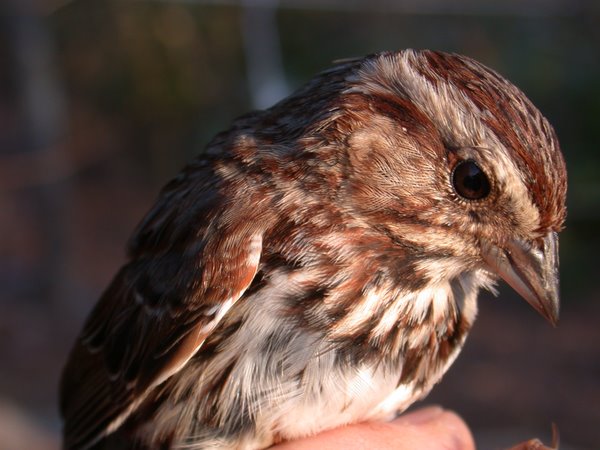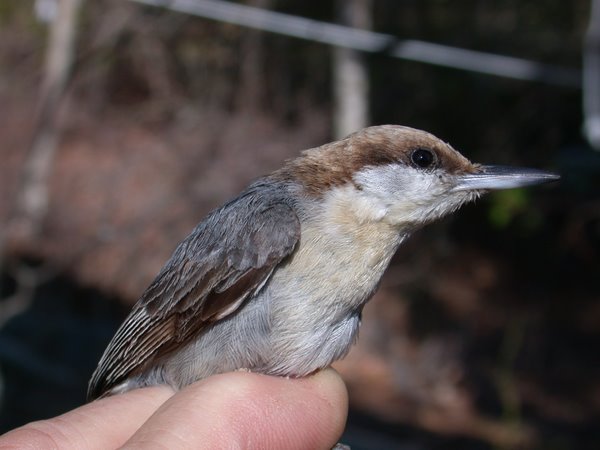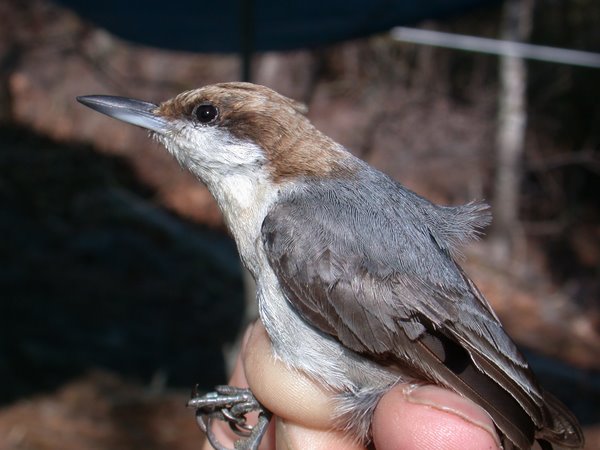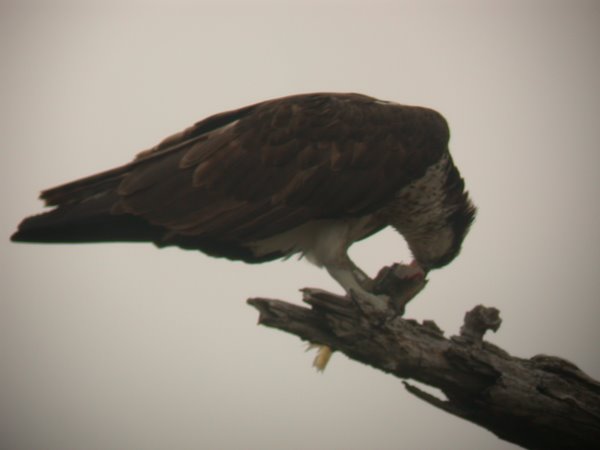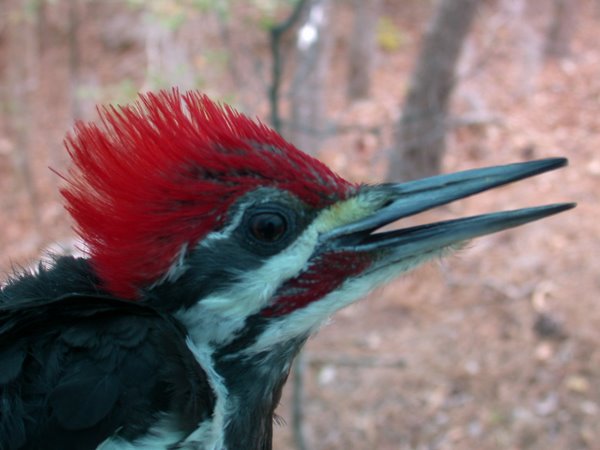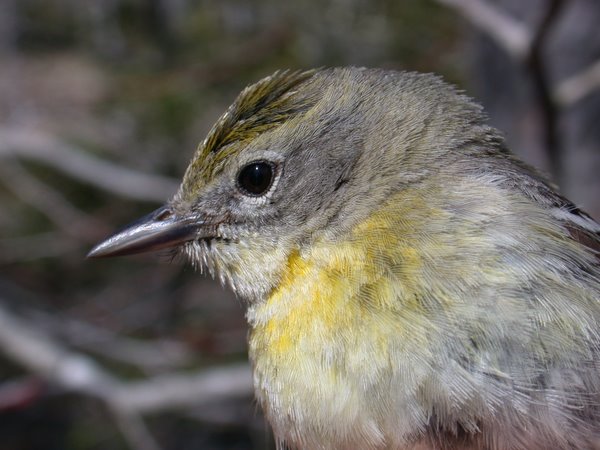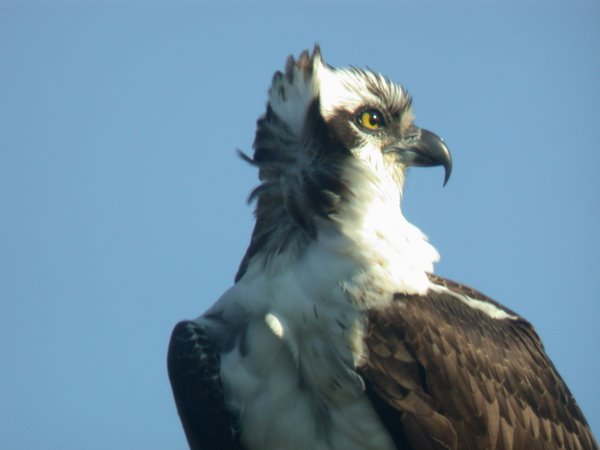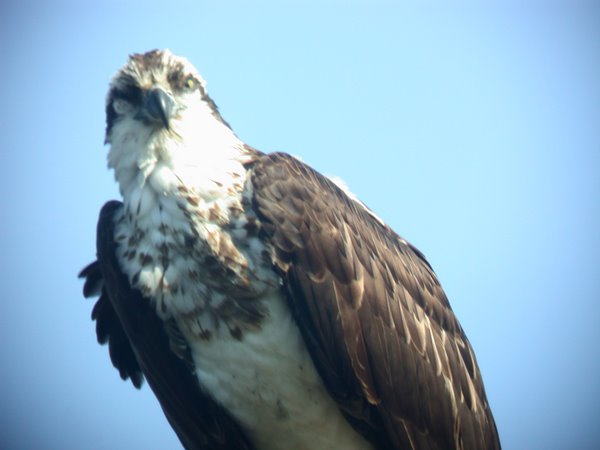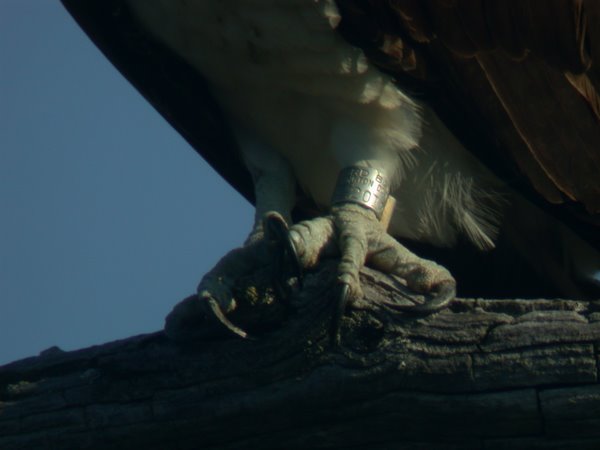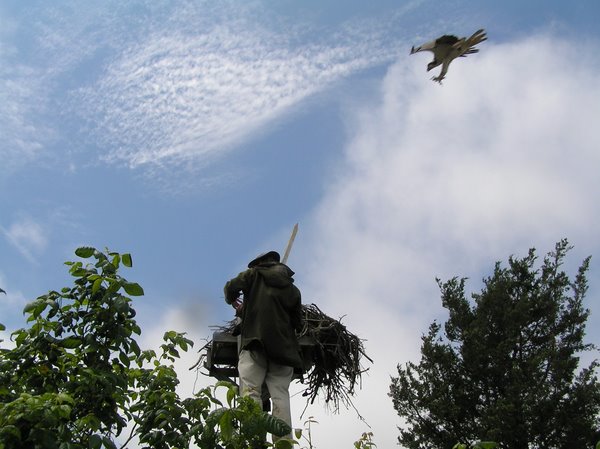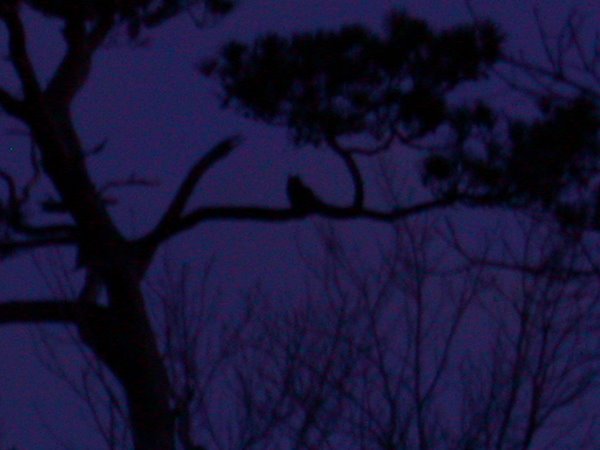




On consecutive banding days in late March, two new species were added to the list of birds marked at the First Landing Station. The First Landing species total now stands at 113.
A female Rusty Blackbird appeared late in the morning of the first CVWO bander training weekend in one of the wetland edge nets often frequented by Red-winged Blackbirds and Common Grackles. Rusty Blackbirds are in a steep decline in North America. Read about the Rusty here:
http://nationalzoo.si.edu/scbi/migratorybirds/research/rusty_blackbird/default.cfm After a rain day, one of my favorite birds (and one rarely seen well by observers outside of the breeding season)appeared in one of our "roving" salt marsh nets. When I was much younger, the little bird (8 grams, this one) was called the Short-billed Marsh Wren. Now it is simply known as the Sedge Wren. The slightly larger wren pictured at the bottom above, now known as the Marsh Wren, was formerly the Long-billed Marsh Wren. What an appropriate description! But having the Sedge in the hand allowed me to "absolutely" separate Sedge from Marsh Wren: the length of the exposed culmen of the Sedge (length of upper mandible from the tip to the first feathers at the base of the bill) is less than the length of the middle toe, not including the claw!! Now who figured that out? One of the benefits of the shotgun era of ornithology? The exposed culmen of the Marsh is, of course, greater than the length of the toe! The Sedge Wren is distinguished from the Winter Wren by its lighter, overall appearance.
Which will be the next, new First Landing species? Oh, yes, the prior mystery birds? Song Sparrow and Swamp Sparrow.























